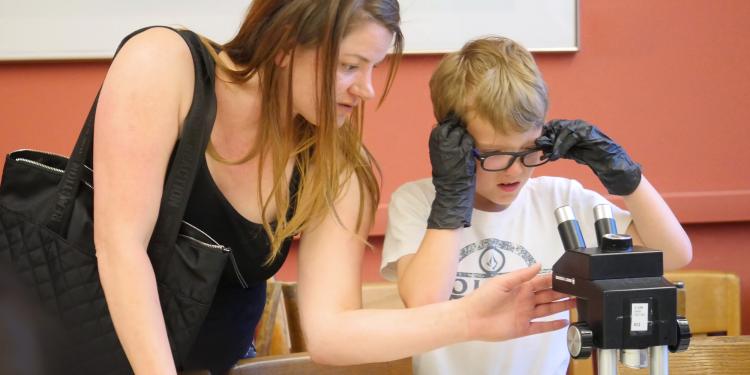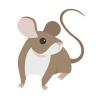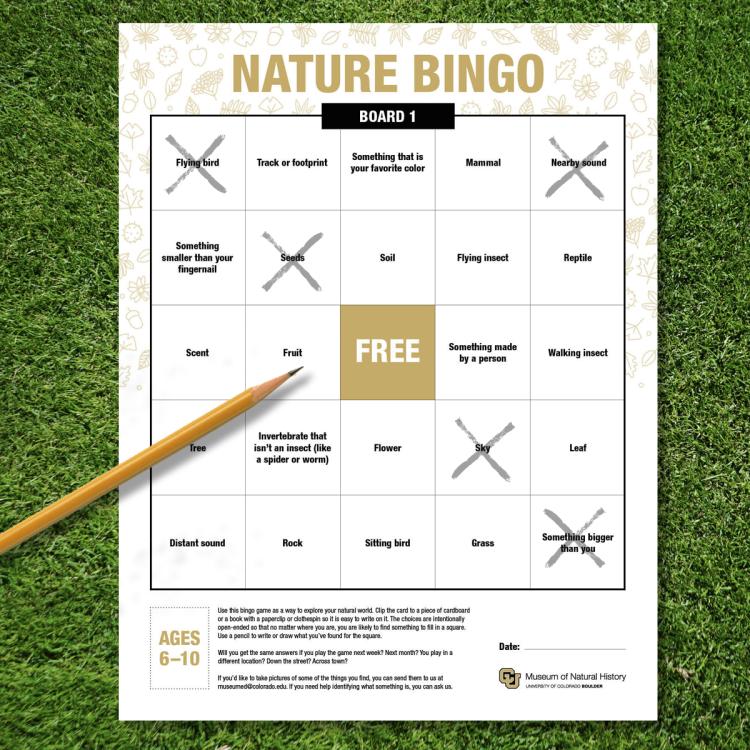The CU Museum is closed we will be opening early in the spring semester.
During this time, collection visits will be available by appointment and other special access requests will be considered on a case-by-case basis.
Please email cumuseum@colorado.edu for more information.
Children and Family Programs

The CU Museum of Natural History welcomes families to learn about the natural world together. Authentic museum objects are the starting point for intentionally curated hands-on science and art activities. Movement and dramatic play reinforce science learning. Tangible memories are created to take home.

Look for “Peri” the Pinyon Mouse to introduce you to each of the four main galleries. Encourage children to search for the tiny doors he hides behind. Children young and old can make, play, and learn with real museum specimens, puzzles, art projects, and books in the learning corner in each gallery:
Examine real fossil specimens in the Paleontology Hall. Children can touch fossil clams, a dinosaur vertebra, and a dinosaur leg bone. Read a book, color a skeleton, or complete a dinosaur puzzle, then unroll a trackway and walk like a therapod. Older children can complete a specimen scavenger hunt, learning about the food chain along the way.
Movement abounds in Tree Space, where families create puppets and practice dramatic play, responding to prompts about the natural world. There are plenty of textures, sounds, and even smells to explore in the family corner and on the learning cart. Older children will be challenged by tree ring counting and fossil leaf sorting activities.
Anthropology Hall encourages families to think about things that are alike and different. Make observations about different types of shoes for different situations, and sort materials, or create a colored bead pattern. Tie a bridle to a horse puppet or create a magnet mural using ancient Colorado animals.
Families who need a break could head to BioLounge to rest and recharge. There are tables for snacks or a packed lunch (food is not available for purchase). Families will enjoy playing I-Spy with the many cabinets full of museum specimens.
All family learning opportunities at the CU Museum are based on the following concepts:
- Intergenerational learning – adults will learn new things along with children
- Engagement with scientists and CU students
- Opportunities to experiment and personalize
- Build bridges and provide tools to take out into the natural world
- “Low-tech/high engagement” activities
- Activities/experiences that are unique to the museum setting
- Culturally sensitive and relevant
- Real museum specimens and artifacts
- High quality art supplies
- Real science equipment

Family fun at home!
Check out these downloadable resources for at-home activities, available in both English and Spanish.

